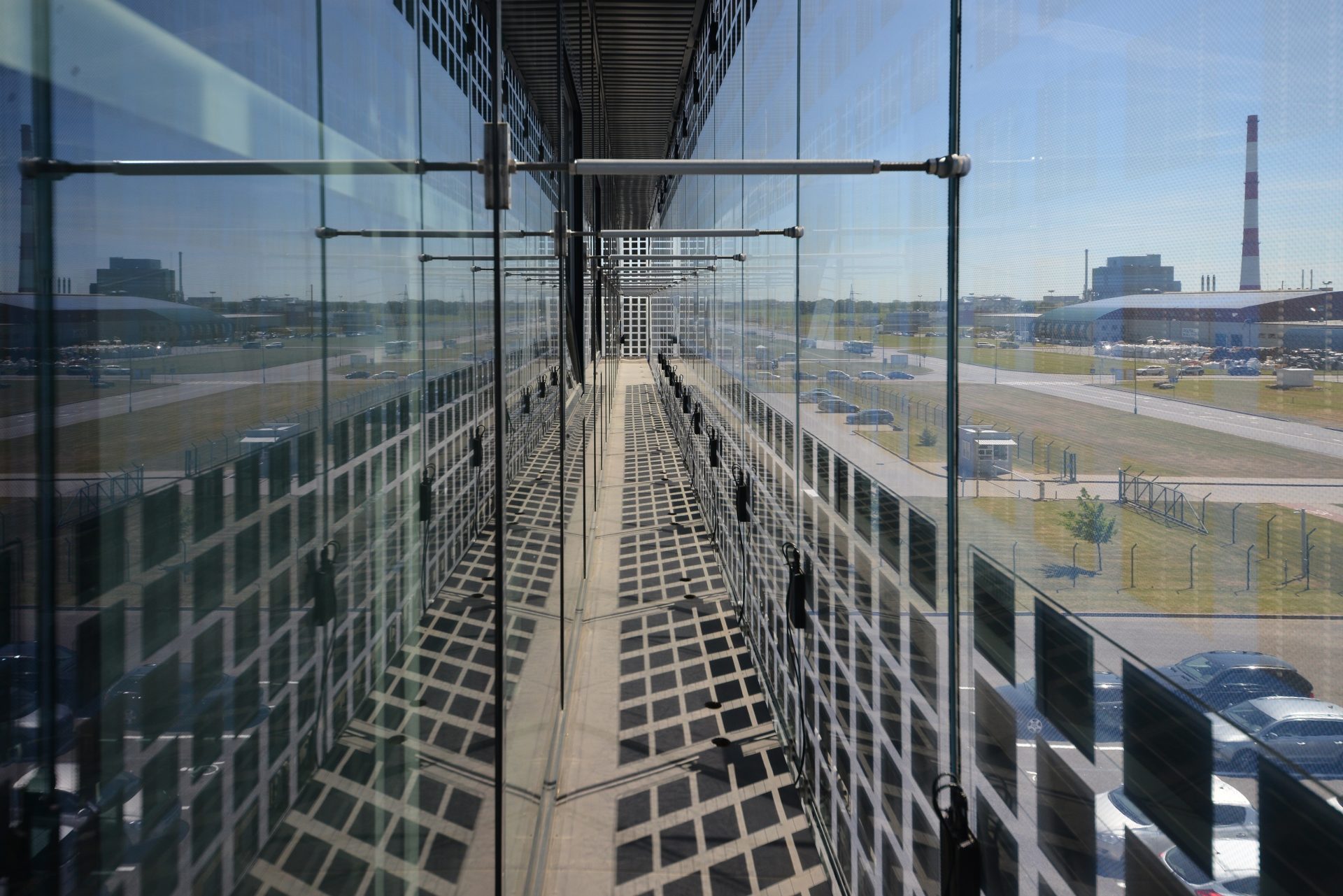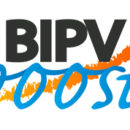
This SmartFlex demo building in Klaipėda, Lithuania, features a double skin facade with semi-transparent PV glass. Photo: Glassbel.
The following article originally appeared in “pv magazine 09/2019, p.p. 48 – 50”. Web version of the article (October 2019).
Why hasn’t more building-integrated PV (BIPV) been installed throughout the world? The simplest answer is that a PV module does not make architecture. The nature of the building process – its methods and logic – are key factors affecting technological transfer, as seen in the steel and concrete industries, which have been the basis of modern architecture for the past century. In many cases, standardization would go against the case-by-case approach to design and the interdisciplinary nature of the field. Solar architecture therefore involves a synergy concept of constructive and functional correctness, while always engaging an “aesthetic intention.” So how can the market segment continue to drive down costs?
We can try to resolve the actual barriers that still hold back BIPV development by changing our approach. Limitations due to shading in urban areas, or architectural and typological constraints, should no longer be seen as a no-go. Rather, they should be viewed as boundary conditions to be considered in design and technical solutions aimed at integrating solar potential with aspects of building design. The share of BIPV in the global solar PV market stood at approximately 1% in 2017, while in Europe, BIPV holds a share of about 2%. The EU-funded PVSites project estimates that by 2022, BIPV will account for around 13% of the total PV market. Is this forecast realistic, or is too ambitious? The BIPV market in Europe is particularly dynamic, with a range of new products, research projects and flagship buildings emerging in recent years. Policies that push building owners to renovate, like net zero energy building programs, will be key drivers for the continent’s BIPV economy. EU players will eventually have the chance to create a unique market with a quality-based asset.
Many trends define today’s routes to innovation. Both products and processes are interconnected. Thanks to industrial developments, a wide range of new products are available at competitive prices. Glass treatments that hide the solar cells – colored films or structured glazing, for example – are one path. But integration today means something more than pure cosmetics. We have to move from luxurious and costly BIPV solutions to a mass-market, cost-effective approach, with a clear focus on ordinary built stock. This involves innovation at different levels – not just with product aesthetics, but also in terms of flexibility and automation in manufacturing, creating multifunctional products for the building skin, process management based on digitalization, advanced performance assessments, and procedures that support the market to ensure quality, safety and reliability.
According to the European Commission’s “SET Plan – Declaration on Strategic Targets in the context of an Initiative for Global Leadership in Photovoltaics,” the way to expand the BIPV market is to set extremely ambitious cost-reduction targets: a 50% reduction of additional BIPV module costs from 2015 to 2020, and a 75% cut by 2030. But how can the industry introduce the aforementioned innovations with such ambitious cost-reduction targets?
The BIPVBOOST project, funded by the EU Horizon 2020 program, was launched in October 2018. The three-year initiative focuses on bringing down the cost of multifunctional BIPV systems, by addressing the entire value chain. After examining cost-competitiveness from a dynamic point of view – that is, looking at the entire operational lifetime and considering real additional costs when making building components active – it becomes clear that the sector is economically attractive.
The BIPVBOOST project will focus on different strategies throughout the entire process, from pre-design to operation and maintenance:
- implementing a large degree of flexibility and automation in the manufacturing of BIPV modules;
- developing a range of multifunctional, cost-competitive glass-glass modules that comply with market requests through innovations in materials and processes;
- implementing new multifunctional solutions for building skins by enabling simplified substructures and mounting procedures, together with thermal insulation and water retention;
- defining a qualification process that simplifies the standardization framework.
Beyond products, process innovation is also essential for tackling construction sector fragmentation. That is why BIPVBOOST is proposing new digital and data-driven solutions to enhance the collaboration of stakeholders throughout the value chain, thanks to building information management (BIM) and the implementation of advanced monitoring, as well as modelling and data analytics for automatic fault detection and predictive maintenance in BIPV operations. With energy management, everything is aligned with nZEB implementation objectives. As legendary architect Ludwig Mies Van der Rohe once said, architecture should be a symbol of its time. To have “good buildings,” we need to look at architecture within a global context. That way, even with solar, there will only ever be “good” architecture.
About the authors
Pierluigi Bonomo is the head of the innovative building envelope team at the Institute for Applied Sustainability to the Built Environment at the University of Applied Sciences and Arts of Southern Switzerland. He has completed a Ph.D. in Building-Engineering/Architecture at the University of Pavia, with a thesis focusing on BIPV. He specializes in the design and envelope engineering of near zero-energy buildings, and has received a number of awards and acknowledgments for his work. He actively collaborates on different European and federal research projects related to product and process innovations for BIPV implementation. He is an expert member of the International Energy Agency’s Task 15 team.
Francesco Frontini is a professor at the University of Applied Sciences and Arts of Southern Switzerland and the head of the building sector at the Institute for Applied Sustainability to the Built Environment. He holds a degree in Building Engineering and Architecture from Politecnico di Milano. His research was supported by experimental work on the design of actual buildings. Early in his career, he worked in the solar facades group at the Fraunhofer Institute for Solar Energy Systems, where he gained extensive experience in building simulations and BIPV solutions. He later completed a Ph. D. in Building Engineering in 2009 and worked with different manufacturers to develop new multi-functional BIPV facades for solar and glare control. Frontini also has broad experience with energy and lighting simulations and is a member of the European Committee for Electrotechnical Standardization. He has worked on the European BIPV standard EN50583 and is now working on international standards.


